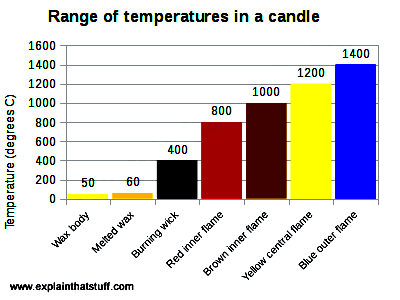- A really bit (.3%, wt.) of sunflower wax in soybean oil can build an organogel.
- An organogel prepared with 2% sunflower wax in soybean oil can establish margarine having a similar firmness to what commercial spread.
- Relatively firm margarines may also be created from sunflower wax organogels prepared with 12 other healthy vegetable oils.
Solid fats are broadly used to supply a preferred texture in structured foods for example margarine and spreads. The hydrogenation process can establish solid fats from vegetable oils which are liquid at 70 degrees, and partly hydrogenated vegetable oil is a common component in foods. However, trans fats generated during partial hydrogenation are recognized to increase the chance of heart disease by raising the amount of bad cholesterol (low-density lipoprotein, LDL) and lowering the amount of good cholesterol (high-density lipoprotein, High-density lipoprotein). Consequently, the united states Fda (Food and drug administration) has asserted that partly hydrogenated oils won’t be looked at "Generally Acknowledged as Safe" (GRAS) which food companies must phase out their use by 2018.
Plant wax as organogelator
Palm oil, coconut oil, fully hydrogenated vegetable oils, as well as their modified oils have grown to be typically the most popular options to trans fats within the food industry. However, these alternatives contain high items in fatty foods.
Structuring edible oil by having an organogelator is becoming an essential research technique for replacing trans fats without growing the quantity of fatty foods (Marangoni, 2012). An organogel, also known as oleogel, is really a type of gel made from a liquid organic phase immobilized with a three-dimensional network created by an organogelator.
Although various kinds of organogelators happen to be developed, plant waxes for example candelilla wax (CW), grain bran wax (BRW), sunflower wax (SW), and carnauba wax are of curiosity because of their availability, inexpensive, and great gelling ability. Some plant waxes have shown potential health advantages. For instance, when rats were given with diets that contains as much as 1% SW, their serum levels of cholesterol were decreased. It had been also discovered that gelation of oil by having an organogelator can control the discharge of lipids in to the bloodstream which, consequently, attenuates the publish-prandial increases in triglycerides, free essential fatty acids, and levels of insulin caused through the acute ingestion of fat. Therefore, it’s possible to expect multiple health advantages from foods which have been structured using organogels.
Additionally, most plant waxes are by-products. For instance, SW is created throughout the refining of sunflower oil. Therefore, developing foods that contains wax-based organogels facilitates using these farming by-products.
Gelation ability of plant waxes
Sunflower wax (SW) can produce a gel with concentrations as little as .3 wt%. Candelilla wax and grain bran wax may also form gels at concentrations of .5-1 wt%. Compared, partly hydrogenated soybean oil that contains trans fats needed the absolute minimum power of 18 wt% to create a gel. This signifies that just a tiny bit of wax can be utilized instead of a lot of hydrogenated vegetable oil to attain an identical texture. Fig. 1 shows the preparation from the organogel of .5% SW in SBO.

FIG. 1. Organogel formation from .5% sunflower wax (SW) in soybean oil (SBO) by dissolving SW with heat and cooling
Fig. 2 shows the way the firmness of organogel depends upon the quantity of wax. Three waxes, SW, RBW, and CW were compared. Not surprisingly, organogel firmness elevated by having an growing quantity of wax. SW demonstrated the finest firmness, adopted by CW after which RBW. The organogel that contains 3% SW demonstrated greater firmness compared to gel that contains about 20% hydrogenated soybean oil. The superb gelling property of SW and also the high firmness from the organogel were described through the effective means by that the oil was immobilized with systems of several thin plate-like crystals (Hwang et al., 2015).
 FIG. 2. Firmness (Newton, N) of organogels prepared with plant waxes
FIG. 2. Firmness (Newton, N) of organogels prepared with plant waxes
Preparation of margarine from organogel
A wax-SBO organogel was incorporated inside a margarine formulation made up of 80% organogel, about 20% water phase, and many minor ingredients for example emulsifiers and salt. Regrettably, margarines that contains CW demonstrated phase separation. RBW-that contains margarines demonstrated really low firmnesses as proven in Fig. 3. Margarines prepared with SW-organogel demonstrated probably the most promising results. It had been discovered that as the firmness of business spread products ranged from .14-.57 N, hard margarine products demonstrated much greater firmness varying from 16.7-20.2 N. These results indicate that a couple ofPercent SW can be utilized in margarine to offer the firmness of the commercial spread product. Firmness from the hard margarine might be achieved with 10% SW.

FIG. 3. Firmness (Newton, N) of margarine prepared with plant waxes
Fig. 4. shows the comparison between margarines prepared with SW and individuals with hydrogenated soybean oil. Margarines with 18-30% hydrogenated soybean oil demonstrated slightly greater firmness than margarines with 2-6% SW. This result signifies that when it comes to hardness characteristics, a couple of-six percent SW may replace 18-thirty percent hydrogenated soybean oil inside a margarine formulation.

FIG. 4. Comparison of firmnesses (Newton, N) of margarines prepared with sunflower wax and hydrogenated soybean oil
Other vegetable oils
Since SW-SBO organogels labored well within the margarine formulation, a number of healthy vegetable oils were evaluated to determine whether or not they also could provide margarines with reasonable firmness along with other qualities. Fig. 5 shows the firmnesses of margarines prepared with 3% SW and 12 other vegetable oils. Their firmnesses were discovered to be similar to those of SBO margarine, indicating that numerous healthy margarine and spread products can be created from vegetable oils wealthy in polyunsaturated essential fatty acids using SW being an organogelator.

FIG. 5. Firmnesses (Newton, N) of margarines prepared with 3% sunflower wax (SW) in a number of vegetable oils
Physical attributes
Yilmaz, et al. (2015) studied physical features of organogels of 5% beeswax in virgin essential olive oil and 5% SW in virgin essential olive oil as spreadable products when compared with commercial breakfast margarine. Oleogels of hazelnut oil that contains 5% wax were also evaluated as butter alternatives in contrast to commercial butter. This research provided data on 13 physical definition terms (hardness, spreadability, liquefaction, grassy, milky, rancid, fatty, sweet, salty, waxy, grittiness, cooling, and mouth coating) of these organogels. Consumers gave these organogels good scores regarding hedonic attributes (appearance, odor, flavor, and spreadability). Even though some scores were somewhat less than commercial products, overall these organogels shown high potential as spreads or butter alternatives and may be commercialized after making minor enhancements within their color, aroma and taste.
Other foods rich in commercial potential which have been prepared from organogels of vegetable oils include frozen treats, cookies, meat, bread, and chocolate.
Hong-Sik Hwang is really a research chemist in the National Center for Farming Research (NCAUR)-Farming Research Service, US Department of Agriculture in Peoria, Illinois, USA. He’s been with NCAUR since 2010. Just before joining NCAUR, he labored for nine years at Indium Corporation. Hwang received his Ph.D. in organic chemistry from Texas Tech College, Lubbock, Texas, USA, in 1996. He is able to be contacted at HongSik.Hwang@ARS.USDA.GOV.
Suggested studying
Micha, R. and D. Mozaffarian, Saturated fats and cardiometabolic risks, heart disease, stroke, and diabetes: A brand new consider the evidence, Lipids 45:893-905 (2010).
Marangoni, A. G., Organogels: An alternate edible oil-structuring method, J. Am. Oil Chem. Soc. 89:749-80 (2012).
Hwang, H.-S., S. Kim, K.O. Evans, C. Koga, and Y. Lee, Morphology and systems of sunflower wax crystals in soybean oil organogel, Food Struct. 5:10-20 (2015).
Yilmaz, E. and M. Ogutcu, Oleogels as spreadable fat and butter alternatives: Physical description and consumer perception, RSC Adv. 5:50259-50267 (2015).
Resourse: http://aocs.org/stay-informed/read-inform/featured-articles/